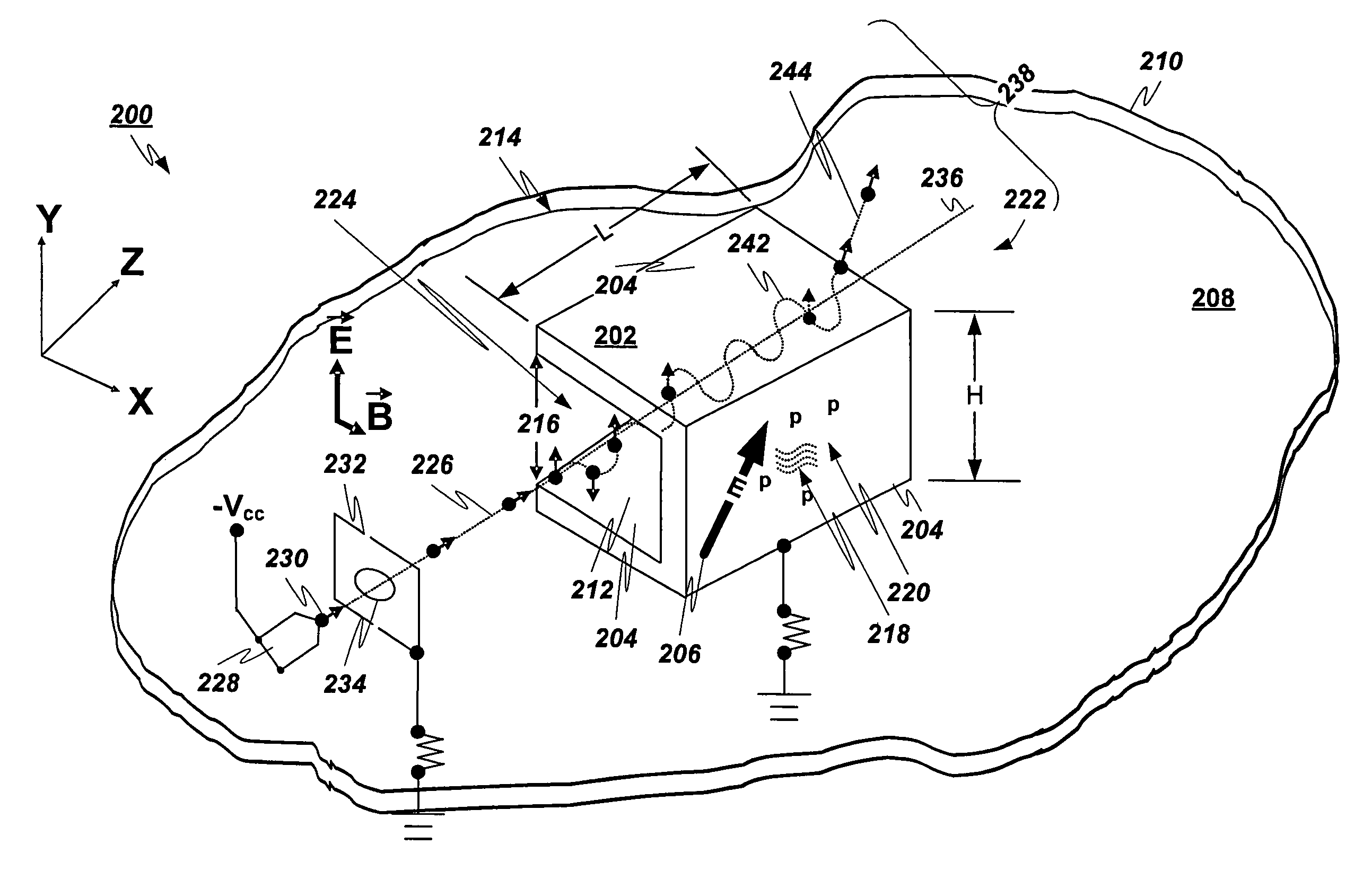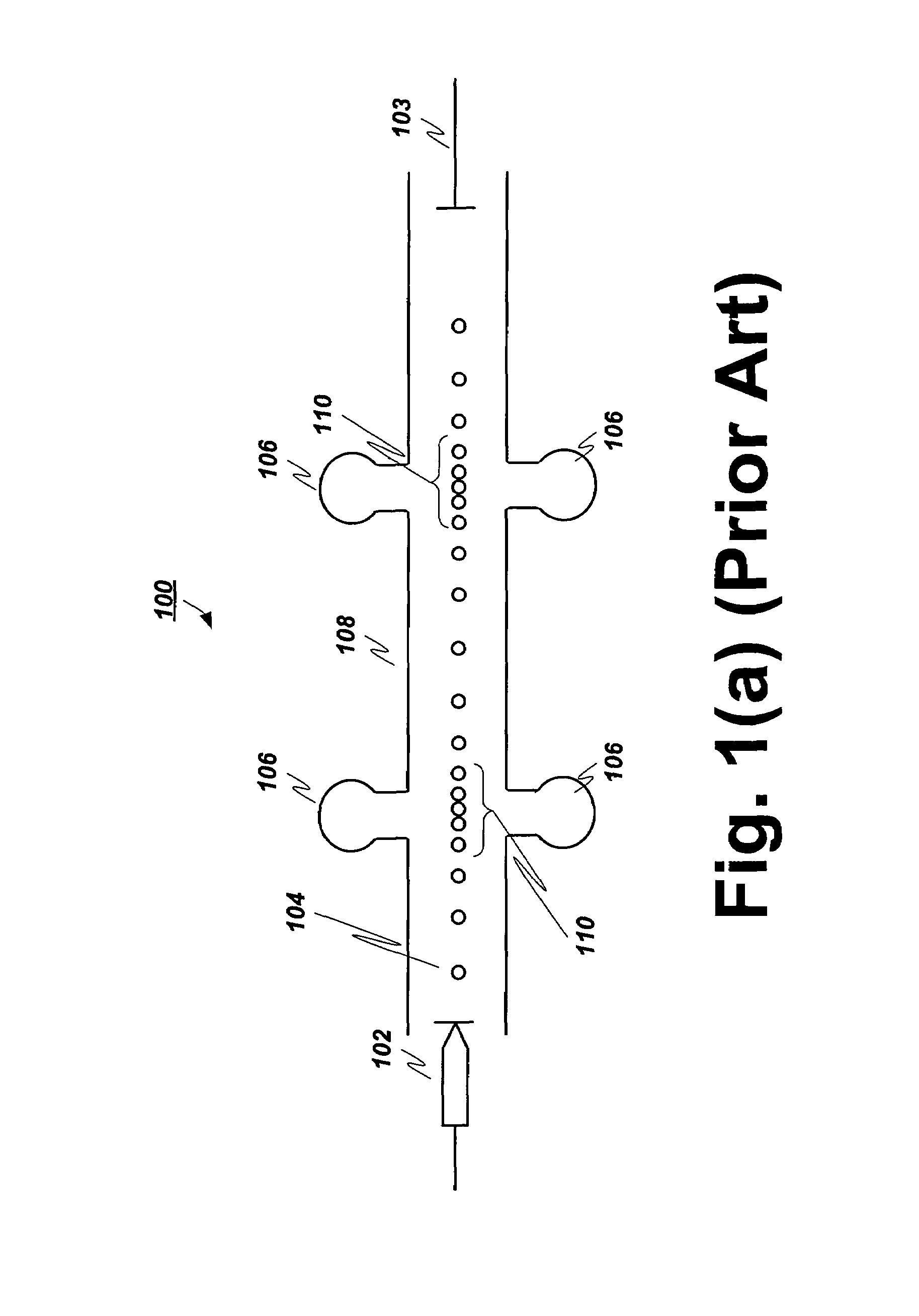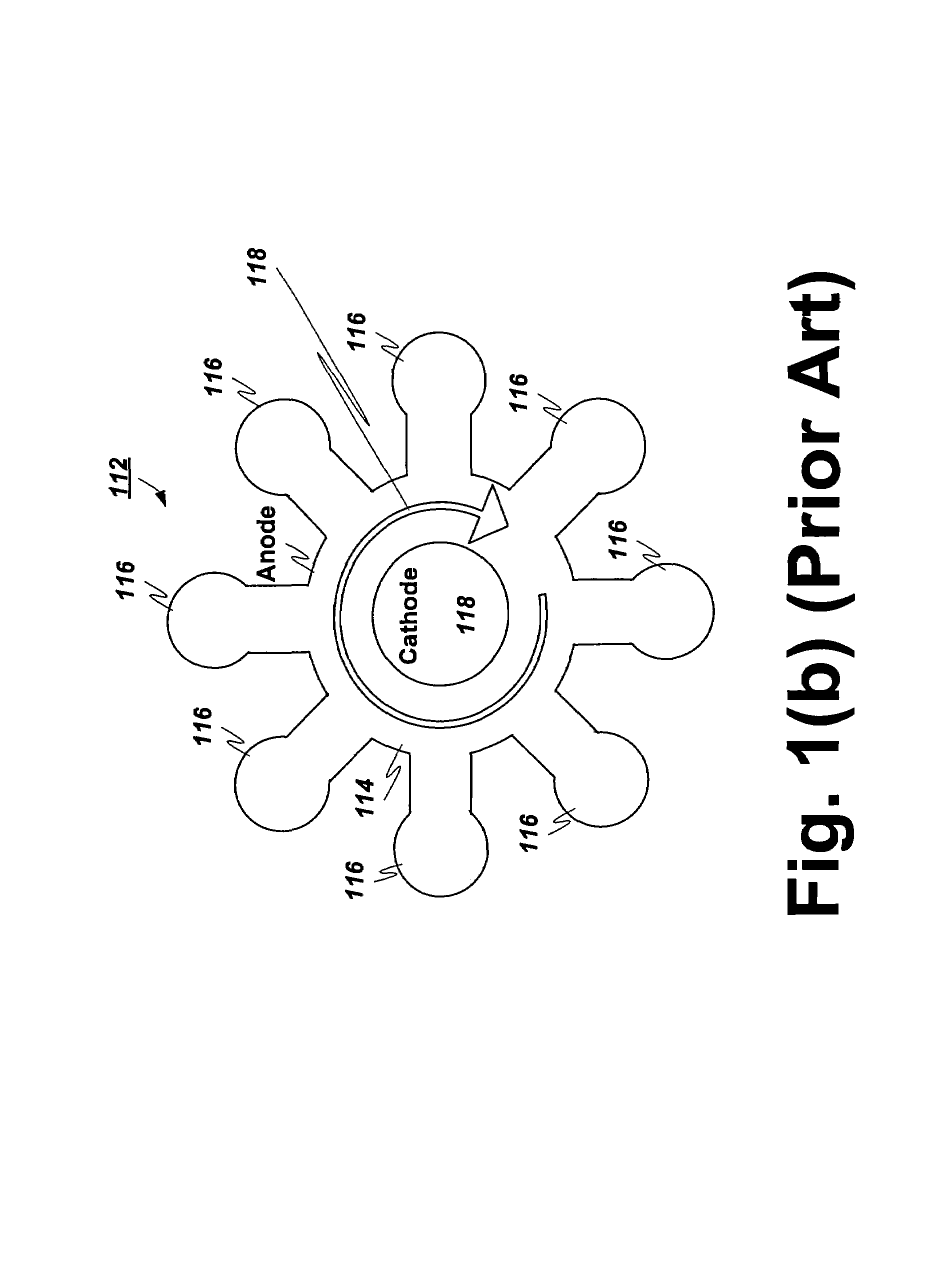Structures and methods for coupling energy from an electromagnetic wave
a technology of electromagnetic waves and coupling energy, applied in the field of coupling energy from electromagnetic waves, can solve the problems of difficult manufacturing, large size of structures needed to create electromagnetic radiation at a desired frequency, and limited success,
- Summary
- Abstract
- Description
- Claims
- Application Information
AI Technical Summary
Benefits of technology
Problems solved by technology
Method used
Image
Examples
Embodiment Construction
Brief Description of the Figures
[0046]The invention is better understood by reading the following detailed description with reference to the accompanying drawings in which:
[0047]FIG. 1(a) shows a prior art example klystron.
[0048]FIG. 1(b) shows a prior art example magnetron.
[0049]FIG. 1(c) shows a prior art example reflex klystron.
[0050]FIG. 1(d) depicts aspects of the Smith-Purcell theory.
[0051]FIG. 2(a) is a highly-enlarged perspective view of an energy coupling device showing an ultra-small micro-resonant structure in accordance with embodiments of the present invention;
[0052]FIG. 2(b) is a side view of the ultra-small micro-resonant structure of FIG. 2(a);
[0053]FIG. 3 is a highly-enlarged side view of the energy coupling device of FIG. 2(a);
[0054]FIG. 4 is a highly-enlarged perspective view of an energy coupling device illustrating the ultra-small micro- resonant structure according to alternate embodiments of the present invention;
[0055]FIG. 5 is a highly-enlarged perspective v...
PUM
| Property | Measurement | Unit |
|---|---|---|
| diameter | aaaaa | aaaaa |
| diameter | aaaaa | aaaaa |
| diameter | aaaaa | aaaaa |
Abstract
Description
Claims
Application Information
 Login to View More
Login to View More - R&D
- Intellectual Property
- Life Sciences
- Materials
- Tech Scout
- Unparalleled Data Quality
- Higher Quality Content
- 60% Fewer Hallucinations
Browse by: Latest US Patents, China's latest patents, Technical Efficacy Thesaurus, Application Domain, Technology Topic, Popular Technical Reports.
© 2025 PatSnap. All rights reserved.Legal|Privacy policy|Modern Slavery Act Transparency Statement|Sitemap|About US| Contact US: help@patsnap.com



